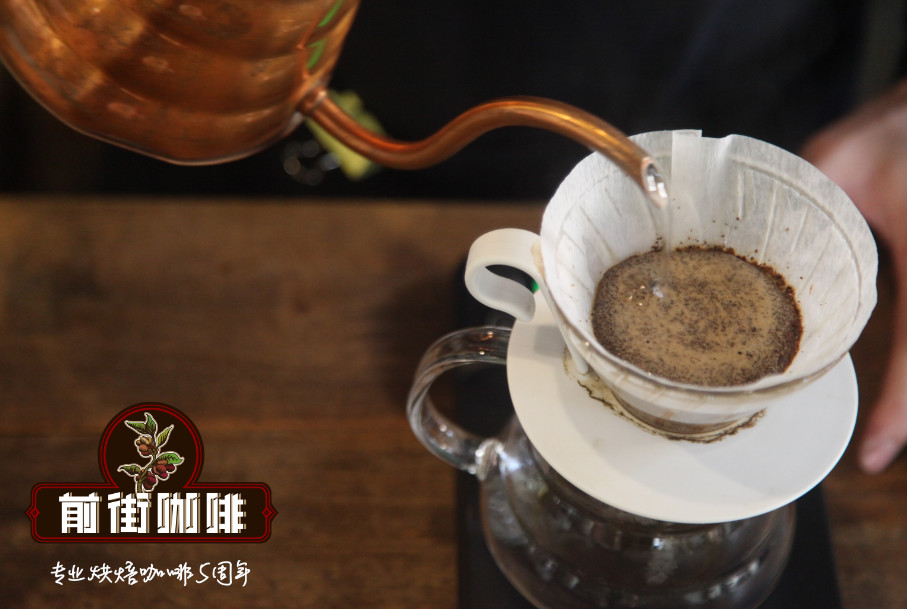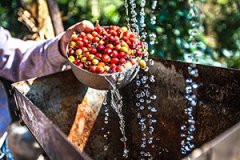What is Costa Rican raisin honey processed coffee? Introduction to the varieties of Huangkaduai Coffee

Professional coffee knowledge exchange more coffee bean information please follow the coffee workshop (Wechat official account cafe_style)
Tarrazu in Costa Rica is one of the major coffee producing areas in the world. The coffee produced is light and pure in flavor and pleasant in aroma. Costa Rica, with its fertile volcanic soil and good drainage, is the first country in Central America to grow coffee and bananas for commercial value. Coffee and bananas are the country's main exports. Coffee was introduced into Costa Rica from Cuba in 1729 and today its coffee industry is one of the most well-organized industries in the world with a yield of 1700 kg per hectare. Costa Rica, with a population of only 3.5 million, has 400 million coffee trees, and coffee exports account for 25 per cent of the country's total exports. Costa Rica has also benefited from the establishment of the Central American Institute for Agricultural Research (Turrialba of the Central American Agricultural Research Institute, referred to as IAAC) in Tarasu, which is an important international research centre.
High-quality Costa Rican coffee is called "extra hard beans". This kind of coffee can grow above 1500 meters above sea level. Altitude has always been a problem for coffee growers. The higher the altitude, the better the coffee beans, not only because the higher altitude can increase the acidity of the coffee beans and thus increase the flavor, but also because the night temperature at the higher altitude is lower, which can make the trees grow slowly, thus making the coffee beans have a stronger flavor. In addition, due to the high altitude drop caused by sufficient rainfall, is also very beneficial to the growth of coffee trees. However, while there are many advantages to growing coffee at higher elevations, the resulting additional transport costs must be taken into account, which is likely to make coffee production unprofitable. The coffee industry in Costa Rica has adopted new technologies to increase efficiency, including the use of "electric eyes" to select beans and identify coffee beans of irregular size.
Located in the south of the country's capital, San Jos é, Tarasu is one of the most valued coffee growers in the country. La Minita Tarrazu coffee is a famous local product, but its production is limited, about 72600 kilograms a year. It is grown on a piece of land called La Minita, which is owned by the last three generations of the McAlpine family in the UK. In fact, this land can produce more than 450 tons of coffee a year. But Tarasu Latin America coffee is grown without artificial fertilizers or insecticides, and its harvesting and selection are done by hand, in order to avoid some damage to coffee beans caused by air spray selection.
Yellow Catuai; Catuai Amarillo, a hybrid of Mundo Novo and Kaddura, was first bred by the Brazilian Institute of Agricultural Research (Instituto Agronomico de Campinas) in 1949.
Huangkaduai, like Red Kaduai (Red Catuai, Catuai Rojo), has extremely high disease resistance and is suitable for planting in high altitude and windy areas. Both Catuai also have a delicate and clean sour taste. Through the adjustment of the machine, coffee treated with red honey, yellow honey and black honey is produced (depending on the degree of honey treatment). Canet is located at the highest altitude where Tarrazu coffee is grown in Costa Rica.
This area is the most densely planted area of Costa Rican fruit, the main manor is to grow passion fruit, the amount of coffee is very rare, only a specific area to grow coffee, take special care, only pick ripe red cherry fruit.
Raisin honey treatment
(100%) glue and zero water treatment. It takes a perfect time to improve the difficulty of honey processing.
On the day of harvest, the coffee fruit will be dried on the bed for at least three days, then at the best time, the cherry skin will be removed, the mucus will be retained, and the cherry will be sent to dry. At this stage, climate factors are the key to improve the success of honey processing. It must be dried slowly to ensure that the coffee surface is fermented, but not so slowly that it may cause the coffee to overferment. During the drying process, cherries must be turned at a fast frequency in order to dry evenly.
The overall texture provides rich tastes and variations, saturated oils, while keeping the taste clean! The coffee tastes very sweet! Acidity changes from berries to citrus acidity provide a rich and varied experience at different levels. The farm's unique beekeeping process is named after famous musicians and artists such as Mozart, JS Bach and Beethoven.
Taste floral and fruity, and add sweet caramel aromas to the mouth, with notes of spices, roses, bergamot, fresh cherries and limes. This is a very sweet coffee with juicy taste and balanced acidity. A mouthful of coffee is like flowers in full bloom.
END
Important Notice :
前街咖啡 FrontStreet Coffee has moved to new addredd:
FrontStreet Coffee Address: 315,Donghua East Road,GuangZhou
Tel:020 38364473
- Prev

KONA Coffee Bean Standard KONA Coffee Bean Why High quality KONA Coffee Bean Brand recommendation
For more information on coffee beans, please follow the Coffee Workshop (Wechat official account cafe_style). The Hawaiian Islands are made up of five islands that produce coffee, but not all coffee from Hawaii can be called KONA beans. So, what kind of coffee can get that name? Please listen: on the west side of the largest island in the Hawaiian Islands
- Next

ACE of Excellence Coffee Alliance plans to launch COE Coffee pilot Project in Indonesia
Professional coffee knowledge exchange more coffee bean information please follow Coffee Workshop (Wechat official account cafe_style) the Coffee Excellence Alliance (ACE) has begun a preliminary COE trial in the town of Takengon in Aceh, Indonesia. ACE, in cooperation with the Indonesian Coffee Association (SCAI) and the local Aceh Tenga government, has received more than 40
Related
- Detailed explanation of Jadeite planting Land in Panamanian Jadeite Manor introduction to the grading system of Jadeite competitive bidding, Red bid, Green bid and Rose Summer
- Story of Coffee planting in Brenka region of Costa Rica Stonehenge Manor anaerobic heavy honey treatment of flavor mouth
- What's on the barrel of Blue Mountain Coffee beans?
- Can American coffee also pull flowers? How to use hot American style to pull out a good-looking pattern?
- Can you make a cold extract with coffee beans? What is the right proportion for cold-extracted coffee formula?
- Indonesian PWN Gold Mandrine Coffee Origin Features Flavor How to Chong? Mandolin coffee is American.
- A brief introduction to the flavor characteristics of Brazilian yellow bourbon coffee beans
- What is the effect of different water quality on the flavor of cold-extracted coffee? What kind of water is best for brewing coffee?
- Why do you think of Rose Summer whenever you mention Panamanian coffee?
- Introduction to the characteristics of authentic blue mountain coffee bean producing areas? What is the CIB Coffee Authority in Jamaica?

